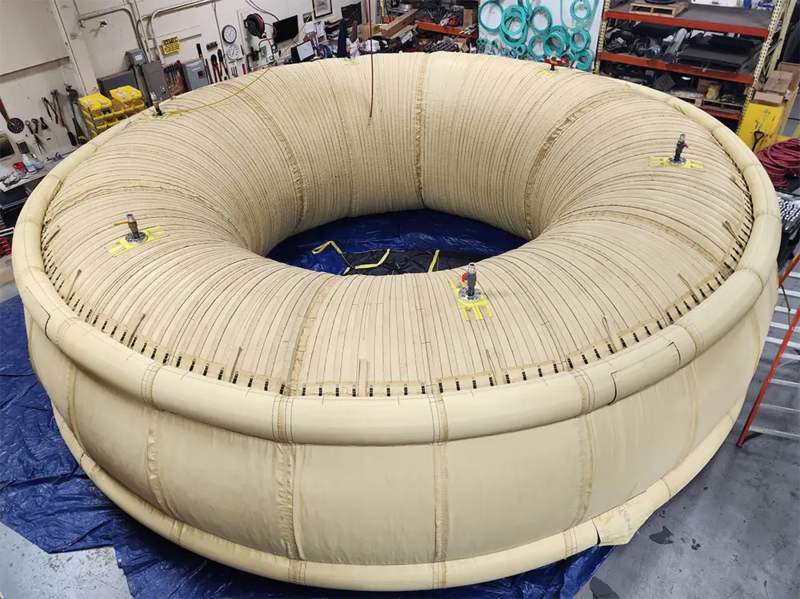Understanding Inflatable Seals: How They Work and Their Applications
Published on by Phil Lundman in Technology
Inflatable seals serve an important role in sealing technology, providing efficient and adaptable solutions for a wide range of industrial applications. These seals create airtight and water-resistant barriers, which are critical for maintaining system integrity in industries such as manufacturing, aircraft, and oil & gas.
Unlike traditional seals, inflatable seals have a flexible construction that allows them to expand and compress in response to changing pressures and environmental conditions. This dynamic the ability enables a secure fit by successfully absorbing fluctuations that might otherwise undermine the efficiency of rigid sealing methods.
What Are Inflatable Seals?

Inflatable seals are specially designed sealing devices which inflate to the proper shape and size while in use, creating an airtight or watertight barrier. They are constructed of a flexible material, usually an elastomer, that expands when compressed, effectively filling the space between surfaces and ensuring a tight seal.
Key Features of Inflatable Seals You Should Know
Flexibility and adaptability : Inflatable seals can expand and contract depending on the pressure applied, allowing them to fit uneven or changing surfaces. This versatility sets them apart from traditional seals, which are frequently inflexible and may not conform well to surface fluctuations.
- Pressure-Responsive Design : These seals' inflating mechanism enables them to respond dynamically to variations in pressure and temperature. As the pressure increases, the seal expands more, maintaining a tight fit even under extreme conditions.
- Versatility : Inflatable seals come in a variety of shapes and sizes, making them useful for a wide range of applications, including closing doors and hatches and providing leak-proof pipeline connections. Their design can be adjusted to fulfill individual needs.
- Improved Sealing Performance : The ability to make a tight seal without applying significant mechanical force helps to reduce wear on mating surfaces. Inflatable seals reduce the possibility of leakage, especially in difficult circumstances.
How Do Inflatable Seals Work?
Inflatable seals work on a simple but effective principle: they form a barrier by inflating with air, gas, or liquid. This inflation process allows the seal to expand and conform to the surfaces it encounters, preventing leaks. The inflation media is introduced via a central channel, filling the cavity of the seal and causing it to expand outward.
Inflation Process:
- Air, gas, or liquid: Inflatable seals can be inflated with a variety of materials. Air is the most frequent, however gases and liquids can also be used according on the application and environment.
- Pressure Changes : As the inflation medium enters the seal, the internal pressure rises, forcing the seal to expand. This expansion pushes the seal against the surfaces it is designed to seal, thereby closing any gaps. When the pressure is released, the seal returns to its original shape, making it reusable.
Benefits of Inflatable Seals
Inflatable seals have many of benefits that make them important in a variety of industrial applications. Their unique design and functionality help to improve performance, operational efficiency, and cost savings. Here are several significant advantages:
- Flexibility and adaptability: Inflatable seals follow to a variety of surface shapes and flaws, ensuring dependable sealing in dynamic conditions.
- Enhanced Sealing Performance : They maintain effective seals even under fluctuating pressure and temperature conditions, reducing the risk of leaks and contamination.
- Cost-effectiveness: As they are reusable and require little maintenance, they save significantly on operational costs and downtime.
These benefits position inflatable seals as a superior sealing solution, which is critical for assuring system integrity and reliability across a variety of industries.
Applications of Inflatable Seals
- Aerospace: Inflatable seals are commonly used in the aerospace industry to seal doors, hatches, and fuel tanks. Their capacity to maintain airtight and watertight seals in the face of high pressure and temperature fluctuations is critical to guaranteeing aviation system safety and integrity.
- Oil & Gas: In the oil and gas industry, inflatable seals play an important role in pipeline and wellhead sealing. They provide reliable barriers to leaks and spills, which is critical for environmental protection and regulatory compliance. These seals are also used in a variety of equipment and valves to keep pressure and avoid contamination.
- Water and Wastewater Treatment : Inflatable seals are widely used in water and wastewater treatment plants to ensure leak-proof connections in pipelines and storage tanks. Their ability to adjust to pressure fluctuations and avoid infiltration helps to preserve system efficiency and water quality.
- Food and Beverage Processing : In the food and beverage industry, inflatable seals are used to create sanitary barriers in packaging machines, tanks, and processing equipment. These seals prevent contamination and assure adherence to hygiene requirements, while their adaptable design allows for simple maintenance and replacement.
Conclusion
In conclusion, inflatable seals are a significant improvement in sealing technology, providing flexibility, improved performance, and cost-effectiveness across a variety of applications. Their adaptability to various surfaces and situations makes them excellent for applications requiring reliable sealing.
Inflatable seals contribute to the safety and efficiency of systems in aerospace, oil and gas, water treatment, food processing, and pharmaceutical manufacture by effectively resolving pressure changes and environmental constraints.
Taxonomy
- Sealing